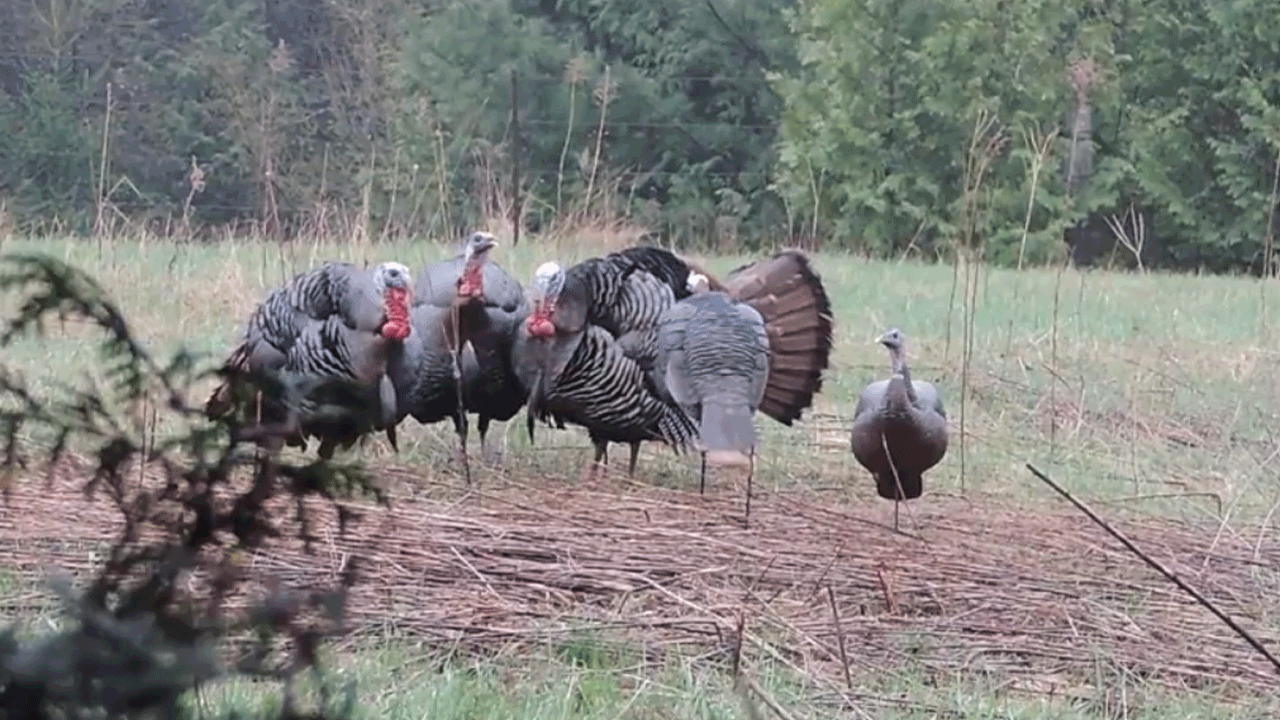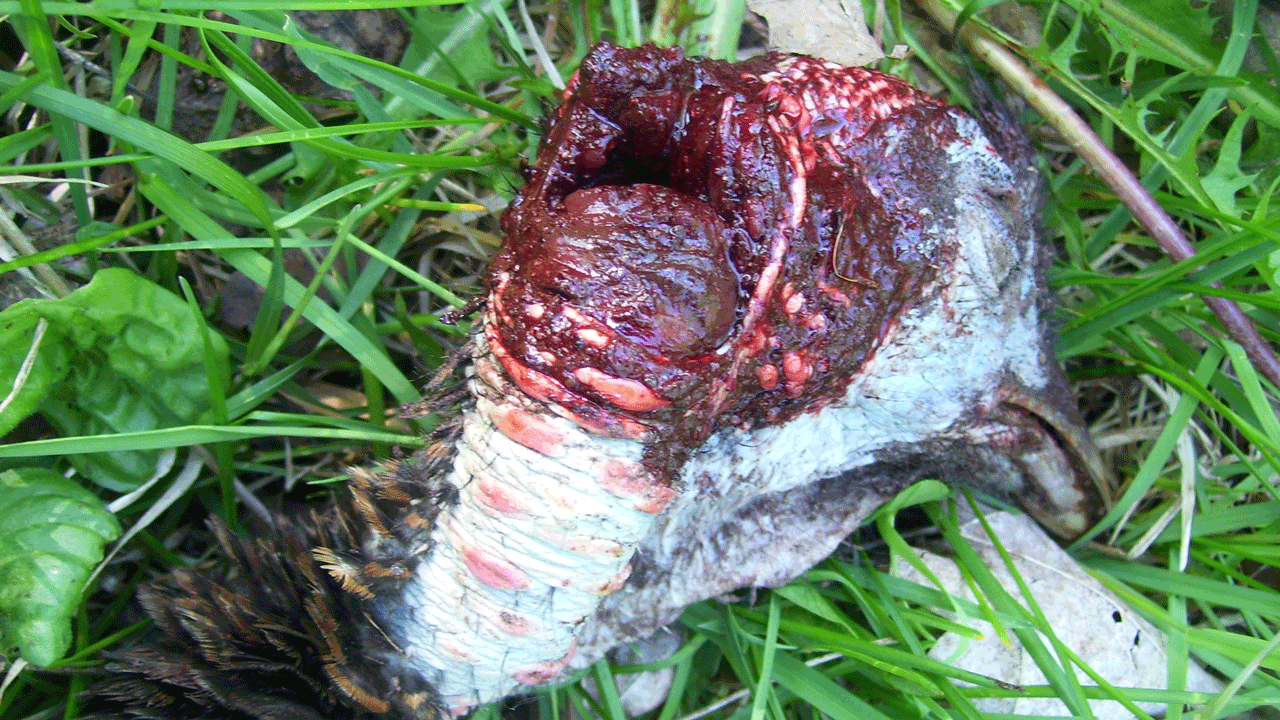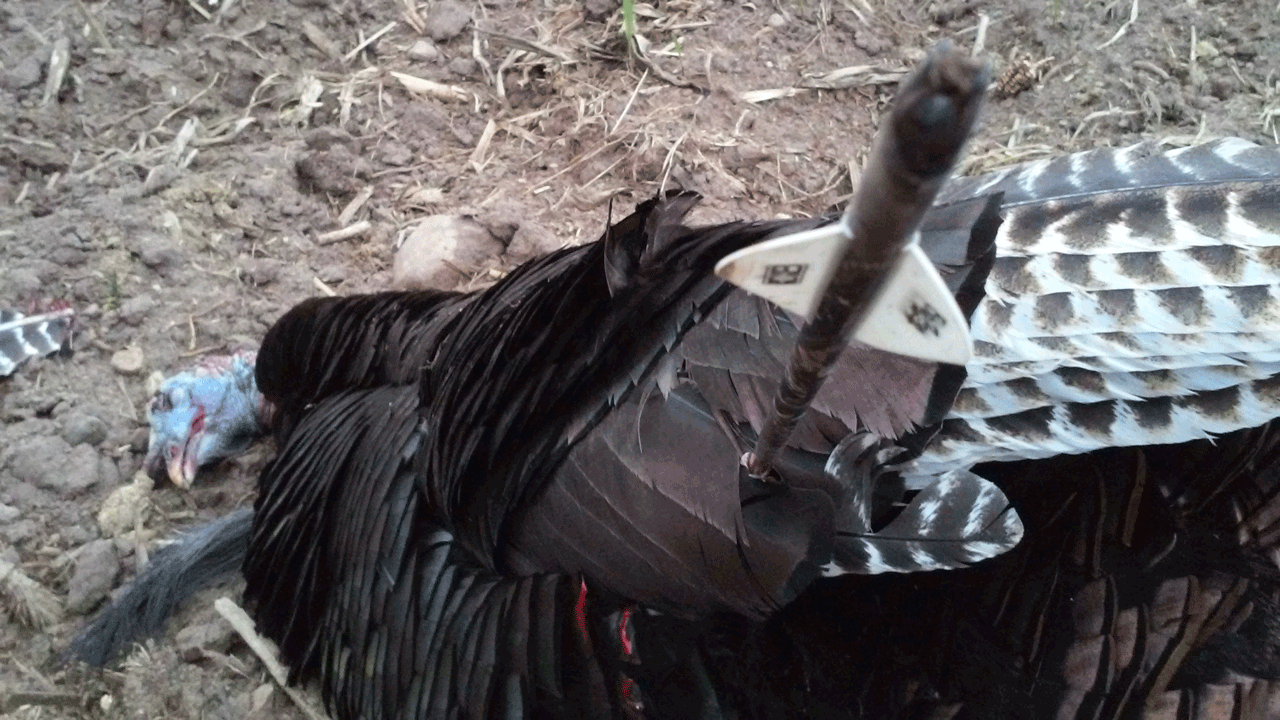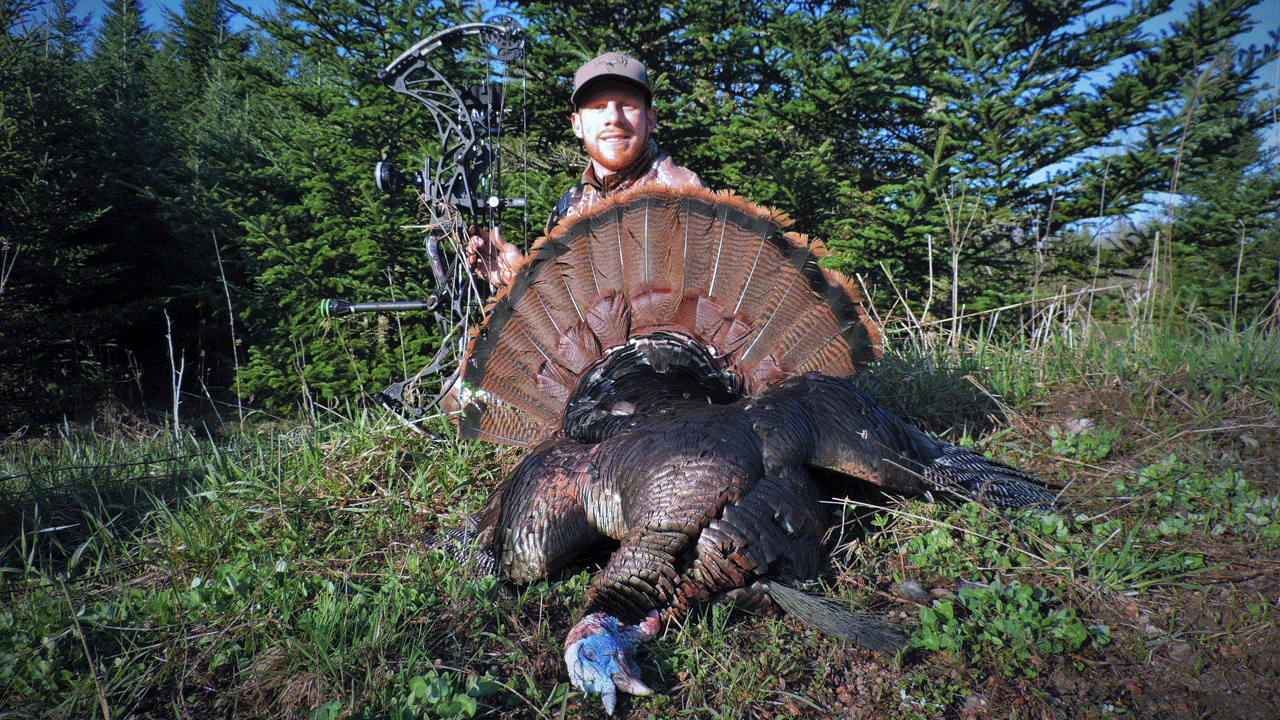Gobbling sent my then-14-year-old heart thumping wildly inside my chest. The tom soon entered the field, strutting back and forth 120 yards away from the Double Bull T5 blind my eldest brother, Joe, and I were occupying. Despite our calling efforts and enticing decoy spread, the gobbler eventually faded back into the timber.
Moments later, a squad of three jakes appeared, making a beeline toward our decoys. It was the first morning of my five-day Wisconsin season, so I glanced at Joe with a do-I-or-don’t-I look. He said, “Why don’t you try head-shooting one of them?” Having previously killed only one other bird — a hen the previous fall — I hooked my release into the D-loop.
At 16 yards, the jakes finally held still, and my pin settled on one of their heads. My arrow missed. Dumbfounded, the three birds slowly walked away from the decoys, and I automatically nocked another arrow and reached full draw. I chose a head, then bracketed it between my 20- and 30-yard pins. The arrow knocked his noggin right behind the eyeball, resulting in instant death. I was thrilled with my first spring turkey, and that I head-shot him from 27 yards. That hunt is 15 years in the books, but I still continue to hear the question when it comes to head shots vs. body shots for turkeys – which works best?

When turkeys show up at your decoys this spring, which shot will you choose? Head shot or body shot?
Head-Shot Pros and Cons
An arrow through the skull or spinal column is arguably the deadliest shot on a turkey. Plus, the bright-red head creates a more prominent aiming point than the dark body feathers. Aiming for the head requires little knowledge of turkey anatomy. Simply put, if you can see the head, just aim at it and shoot.
Now, I’ve heard it more than once: the head shot is a miss-or-kill proposition that eliminates a flyaway or runaway. This isn’t true. In fact, it’s possible for gobblers to get away or live a long time if you nick the head or throat and don’t severe the spine. Don’t believe me? I’ve had it happen. Twice.

A clean shot to the head results in instant death. The author shot this jake through the eye socket, and the expandable broadhead blasted through the back of the bird’s head. No tracking required.
The first time was in South Dakota. I had a gobbler mounting my decoy 4 yards from the blind. I put my top pin on the top of his head, then shot. This is gruesome, and I’m sorry to report this, but the broadhead took off the entire top half of his beak. I should have used my 40-yard pin for such a close shot since my arrow doesn’t reach trajectory to correspond with my top pin until it travels about 10 yards. Fortunately, he didn’t know what happened and continued pummeling my decoy. I nocked another arrow and body-shot him, resulting in a 3-yard recovery. I’m so glad I recovered him.
Last spring, I had another head shot go wrong. I’ve shot dozens of gobblers since my last jake, but when nine jakes spent 20-some minutes in my decoys, I couldn’t help myself. I picked out a strutter, centered my pin on his cranium and shot. My arrow grazed the back of his head, and I could tell he felt it. I didn’t recover that bird, and I’m honestly unsure if he even died. Regardless, I felt terrible. Again, shooting for the head is not a miss-or-kill shot.
The other con is that a turkey’s head rarely quits moving unless you’re dealing with a strutting tom with his head laid against his feathers. Hitting a walking turkey in the head is a tough shot for anyone, but just shy of impossible.
Don’t get me wrong. I’m not against head shots. In fact, I’ve killed two turkeys with skull shots and two with neck shots. All four dropped in their tracks. If you connect with the brain or spinal column, it’s game over.
Body Shot Pros and Cons
A gobbler thumped through the lungs/heart will die quickly. But, determining where to aim, especially for different angles, can be difficult. It’s all too easy to aim for the center of the bird and shoot. Do this enough, though, and you’ll lose birds. Take away a strutter’s feathers, and he’s not nearly as big as he looks. Then, consider the vitals, which are no larger than a softball.
Tons of bowhunters are left scratching their heads after hitting birds with what appeared to be good shots. These are often breast hits, and I don’t believe a breast wound will claim a turkey. Your only hope is to put another arrow in the bird.
Unfortunately, the breast-hit scenario happens more often than one thinks. Thus, I encourage you to thoroughly study a wild turkey’s anatomy prior to taking a body shot. There are many anatomical charts and shot-placement diagrams out there, but this one is the most accurate I’ve found.

This bird collapsed on the spot when the author’s perfectly placed 18-yard body shot impacted it.
Personally, I don’t aim for the heart, though. I aim for the lungs. If you drift downward at the shot when aiming for the heart, you’ll likely miss the vitals. Do the same thing while aiming for the lungs, and you’ll get heart.
The originators of Double Bull Blinds were known to say, “Hit ‘em high, watch ‘em die. Hit ‘em low, watch ‘em go.” That’s a good rule of thumb. The lungs are situated very high and right underneath the spine, so aiming high is the way to go.
Now, all that aside, aiming for the body of a moving tom is far easier than aiming for a bobbing head. I’ve taken dozens of birds with body shots, including several that were moving at a steady clip. I’m not sure I would’ve claimed all those birds with head shots.
Choose Your Broadhead
Broadheads designed specifically for turkey head shots can be deadly to the point of decapitation. Though gruesome, a headless turkey will flop a little, but he’s dead and you won’t have to track him.
On the other hand, head-shot broadheads are tricky to tune. To get them to fly right, you’ll need to fletch your arrows with 5-inch feathers or flu-flu feathers. When you have them flying true, the benefit is that any shot within 2 inches of the turkey’s head, even farther in some cases, will still turn his lights out.
On to body shots. Being 2 inches off the mark on a turkey is like being 6 inches off on a deer, which can make a huge difference in recovery time, or the ability to recover the animal at all. So, for body shots, I prefer a large mechanical broadhead that unloads energy to the bird on impact and cuts a huge wound.
The four turkeys that I’ve head/neck shot were with jackknife-style expandable broadheads. Unlike the large 4-inch head-shot broadheads, you must be dead on for a head shot to work with an expandable broadhead. There’s simply less margin for error.
Making the Choice
For me, deciding between a head or body shot highly depends on the situation and the bird’s demeanor. If I think I have all the time in the world, and the bird is less than 10 yards away and still, I’ll go for the head. This doesn’t happen very often since I use a jake decoy. Toms commonly respond aggressively to it, and they come in pecking and thumping it. Their heads are all over the place, so aiming at the head is nearly impossible. In most cases, I go with the body shot.

McDougal uses a jake decoy to which toms respond aggressively, often kicking and beating it in an epic blur of bobbing heads. So, he most often goes for the higher-odds body shot.
I encourage you to employ a similar approach. Study the bird’s demeanor and know your capabilities. Take only shots you’re confident you can make, and practice diligently on both types of turkey targets (heads and bodies). Then, when you’re up to bat this coming spring, you’ll be able to make the choice that’s right for you.

 By
By 



